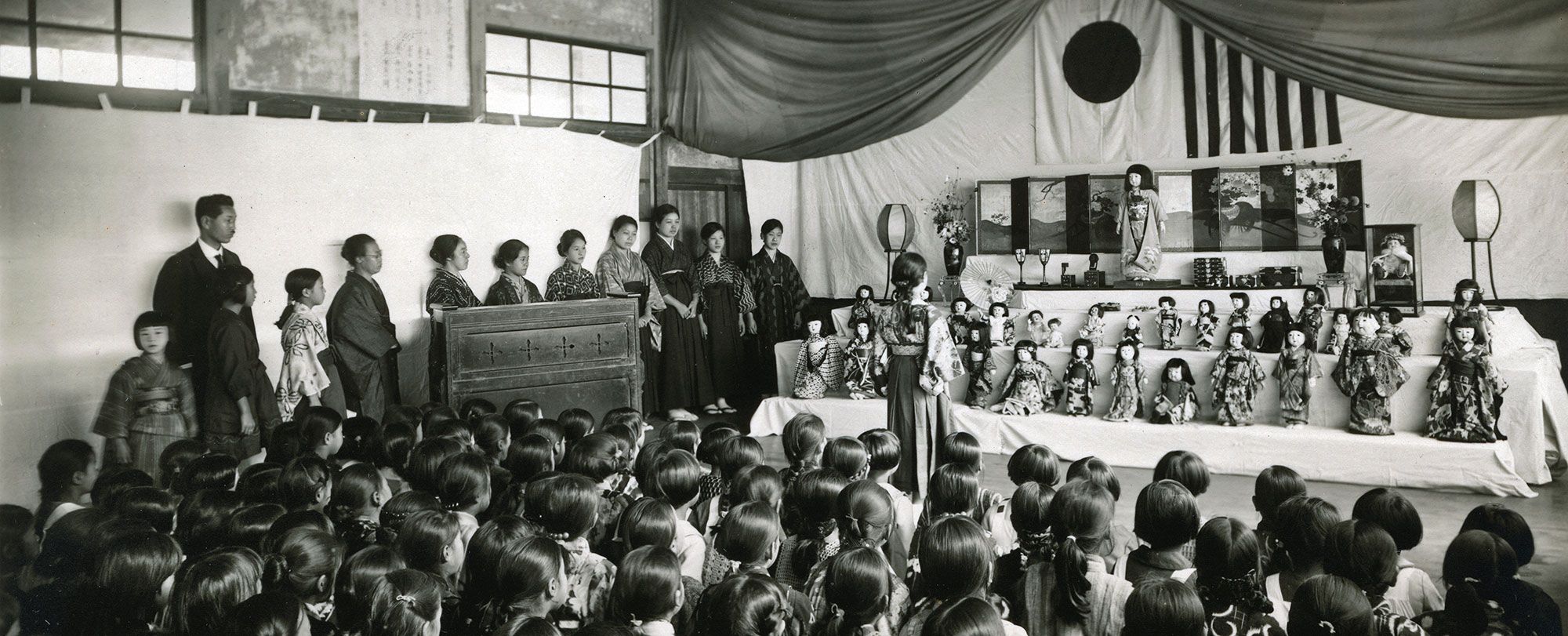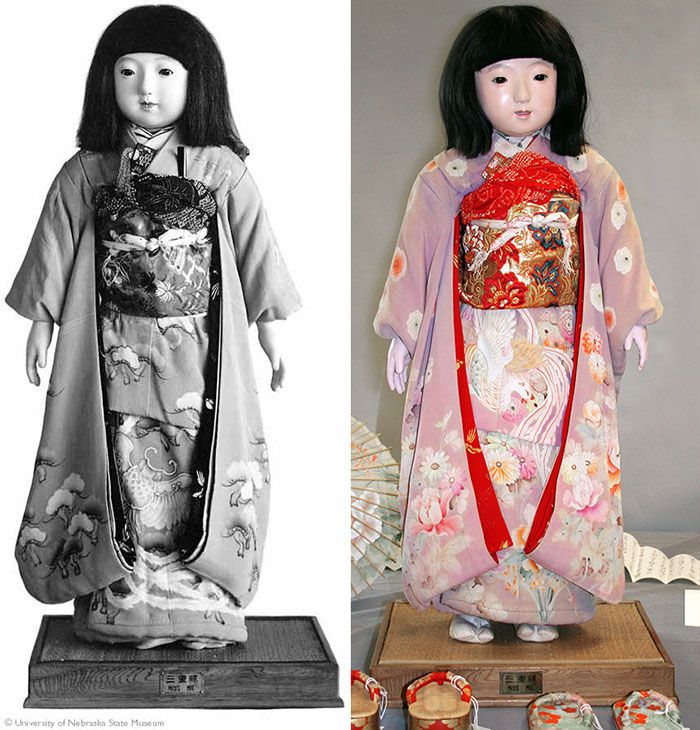
Miss Mie: Historic Japanese Friendship Doll
"Miss Miye," I Presume
Miss “Miye” arrived at the Museum in 1928. She was one of 58 Japanese “goodwill” ambassador dolls being offered to museums in each of the 48 states. The dolls were a gift to the children of the United States given in response to a similar gift project started in 1926 by Dr. Sidney Gulick, a former missionary to Japan. Dr. Gulick had gathered over 12,000 “blue-eyed” dolls from school children all over the United States to send to Japan for the annual Hina Matsuri, or Doll Festival. The dolls were intended to carry a message of goodwill between American and Japanese children during a time of worsening relations between the two nations. The blue-eyed dolls had been received with such enthusiasm that 2,610,00 Japanese schoolgirls contributed about a penny each to have Japanese “Torei Ningyo” or Dolls of Friendship made for American children. The dolls were presented in the United States in November 1927. Small groups of the dolls traveled to 479 cities throughout the States over the next year. After the tour, they found homes in museums and other institutions.
The University of Nebraska State Museum was offered Miss Mie. In responding to the offer from Dr. Gulick for the doll, Museum staff member Miss Marjorie Shanafelt stated, “If we may have this doll she shall have the best case we can procure in which to display her little dollship and we will place her near the cases on Japan so they will supplement one another. I can assure you that we will give the doll every attention.” Some months after the 32" doll arrived, her accessories, which consisted of gold and silver inlaid lacquer articles, passport, steamer ticket, and a number of pictures and letters from the Japanese schoolchildren were received into the collections.

Left: The original Miss Mie in her arrival photo. This doll is currently located at the St. Joseph Museum in St. Joseph, Missouri. Right: The unidentified doll received by the University of Nebraska State Museum who is officially recognized as Miss Mie.
It was with the arrival of the pictures (above) that the Museum realized it had not received the real “Miss Miye.” Pictures from the going away party in the Miye Prefecture made it plain that the doll on the Miss Miye stand had a closed mouth. The doll received by the Museum had an open mouth and wore decidedly different clothing. The accessories matched those in the pictures. Miss Shanafelt noted the museum had received . . . “a lovely doll and we are not complaining, but when we send photographs back to this prefecture showing the doll all installed, will the children be disappointed and not be able to understand what has happened?” Miss Bahr replied, “even before the Dolls reached New York, they evidently lost their individual identities by reason of failure to keep the Dolls and their stands together.” The passports and steamship passes that had been slipped into the doll’s kimono sleeves were the only identification they had. There were no markings on the dolls themselves. To compound the error, after their arrival they had visited so many places in so many different groupings, that it was quite impossible to straighten out the mix. Dr. Gulick advised that the matter of the mouth would most likely not be noticed, but the clothing was so markedly different that perhaps it would be better to use the picture sent from the Miye Prefecture doll in any future correspondence thanking the schoolchildren. “Miss Miye” and many of her accessories were placed on exhibit until the late 1980's.
Friendship doll researcher Michiko Takaoka, Director of The Japanese Cultural Center at Mukogawa Fort Wright Institute in Spokane, Washington, and Special Advisor for Cultural Exchange for the Japanese Agency for Cultural Affairs, recently published Ningyo Taishi* (Doll Ambassadors: An Alternate History of U.S.-Japan Relations) which tells the story of the doll exchange program. She has visited all of the existing dolls (44) from the exchange program. With her help, the original Miss Mie has been located at the St. Joseph Museum in St. Joseph, Missouri. Nebraska’s Friendship Ambassador has not yet been properly identified.
If there is a final determination as to who the doll the Museum has always called Miss Miye is, it can only depend on information found in the original photographs of the dolls. It is believed that pictures from farewell parties Japanese schoolchildren gave to the dolls could help determine their true identity. Unfortunately, the original images are in black and white, and to add to the difficulty, many of the doll’s kimonos are of similar design with only a small “mon” or crest to differentiate them. Many of the original images in Japan were destroyed during WWII, and in some cases, accompanying records that were sent with the dolls to their United States homes have also disappeared. We do know their 1927 tour venue – perhaps, hidden in newspaper archives around the country there are publicity pictures that would help us track which dolls traveled where and with whom. Is it possible a publicity photograph will surface to help us identify the doll? Whatever her identity, Nebraska’s little doll ambassador will still carry her message of friendship and goodwill to the future generations of Nebraskans.
*Doll Ambassadors: An Alternate History of U.S.-Japan Relations, Nikkei Business Publishing Co in March 2004.
ISBN-4-8222-4390-7
Beth Wilkins, Former Anthropology Division Collection Assistant
University of Nebraska State Museum





